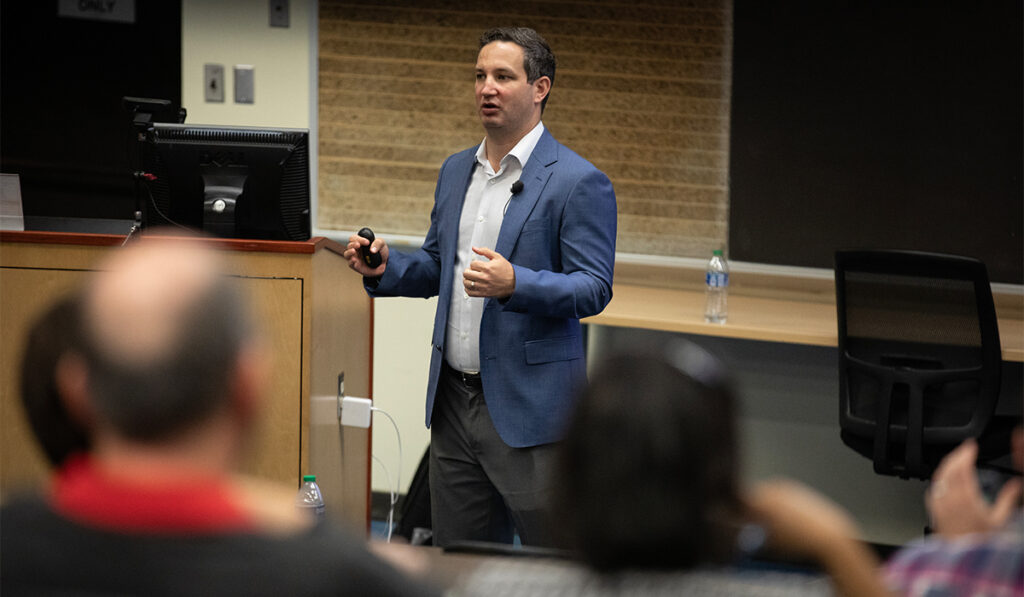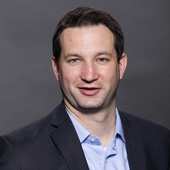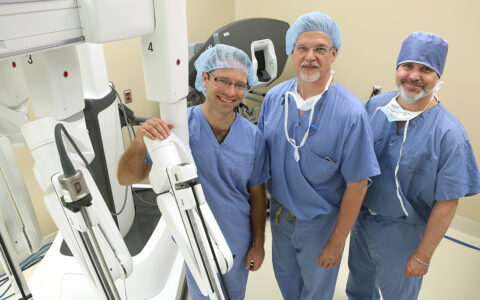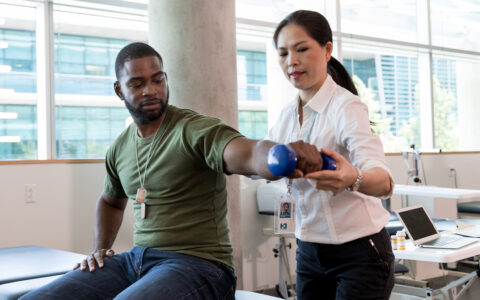Key Takeaways
- Resources and training opportunities help researchers turn academic discoveries into marketable products.
- In 2024, seven VUMC faculty members tapped in-house programs to develop viable business models.
- Daniel Fabbri, Ph.D., says clearly defining the target customer is a valuable first step.
Daniel Fabbri, Ph.D., helps medical center students, staff and faculty become entrepreneurs by tapping his experience as a biomedical informatics professor who has done just that.
Fabbri, associate professor of biomedical informatics and computer science at Vanderbilt University Medical Center, developed software as part of his dissertation that provided a better way for health systems to protect private patient data, which ultimately led to the founding of his company, Maize Analytics Inc., in 2013.
Maize was acquired in 2021 by Secure Link, which became part of Imprivata in 2022. Fabbri continued on as chief data scientist. Fabbri’s decade-long trajectory from Maize to Secure Link to Imprivata ended in July 2023, exactly 10 years to the day after founding his company.
Fabbri returned as full-time faculty to Vanderbilt that same year, and continues to lead his research lab, which he established initially when joining Vanderbilt in 2014. He says Vanderbilt is a natural fit for maintaining his academics-to-industry translation efforts.
“VUMC has programs in place to guide researchers from an idea through translation and to distribution,” Fabbri said.
“VUMC has programs in place to guide researchers from an idea through translation and to distribution.”
Among these are the Vanderbilt Catalyst Fund, Biomedical Informatics Catalyzing Informatics Program, technology transfer ambassadors, and Ideator program, a program assisting the jump from “idea” to innovation and commercialization.
“Our goal is to give VUMC personnel the resources and training to develop ideas that can make a broad impact in healthcare,” he added.
The number of resources available to assist faculty translate their research into a business continues to grow at Vanderbilt.
“We adapted the Wond’ry Ideator program to be not only for students but for faculty,” Fabbri said.
In 2024, seven faculty members used the program to translate their work into business models.
Lessons in Entrepreneurship
Fabbri spoke at a recent forum sponsored by the Brock Family Center, the Vanderbilt Center for Technology Transfer and Commercialization, and the School of Medicine, where he outlined lessons he has learned about entrepreneurship:
- Validate the problem you are solving. Clearly state who your customer is and what your value proposition is for that customer.
- Healthcare sales is hard. Just because you created it, that doesn’t mean it will sell. Academic research built on technology translates into a business a small percentage of the time.
- Build your minimal viable product (MVP) yourself, if you can. Figure out what you can do within a tight budget. “For Maize software, I built an MVP that within one-to-three minutes showed value to someone watching,” Fabbri said.
- Do things that don’t scale at first manually – then scale them. Fabbri handled every request for customer support when his company launched and every other employee offered support, as well. He notes: “The processes you have now will likely not work when you double in size.”
- A challenge of entrepreneurship is that every day is a Saturday – but you work Saturdays. “Everything is your fault. Figure it out and never give up.”
“Everything is your fault. Figure it out and never give up.”
- Your “cool” research/innovation only makes up 20 to 30 percent of the company’s product. The rest of the enterprise are systems constructed around that “cool” thing. These include account management, data management, and data integration.
- Raising capital has pros and cons. By taking money, you are gaining a new partner and boss. Funding has a spectrum of risk/rewards based on the stage of the business. “The number of investors impacts process,” Fabbri said. “With additional funding comes higher expectations.”
- Everyone has different parts of the growth process that they like and dislike. Some entrepreneurs are most comfortable working with no more than 10 people “and everyone does everything,” Fabbri said. Others are interested in working with larger groups, 200 people or more. At Maize, he went from 50 staff members to working with more than 1,000 at Imprivata.
Once the product is marketed and revenue grows, the job is not yet done, Fabbri said. Entrepreneurs face ongoing decisions about whether to take on any additional investments, launch an IPO, merge with other companies, or sell the business.




